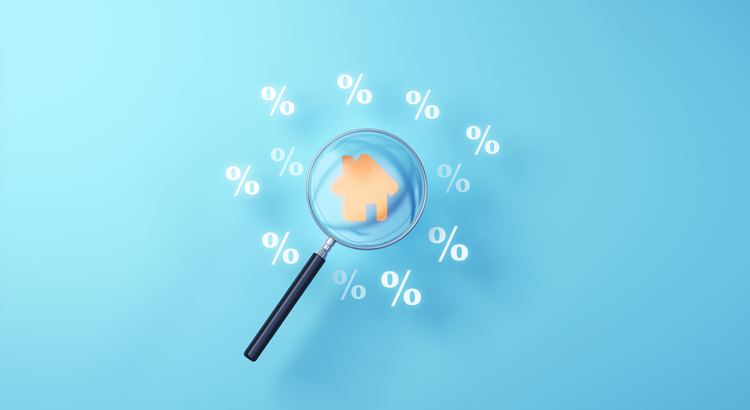As we approach 2025, homebuyers and sellers alike are keeping a close eye on two crucial factors: mortgage rates and home prices. Both play significant roles in the affordability and accessibility of homeownership, as well as the decisions of those looking to sell. While it’s impossible to predict the future with total accuracy, current market trends, economic indicators, and expert forecasts provide valuable insights into what we might expect from the housing market in 2025.
Let’s break down some key projections for mortgage rates and home prices, helping you make more informed decisions as you plan for the year ahead.
1. Mortgage Rates: A Return to Stability?
Mortgage rates have been on a roller-coaster ride in recent years, reaching historic lows in 2020 and then climbing again. But as inflation cools and the Federal Reserve adjusts its monetary policies, there’s hope for more stability in 2025. Here’s what could be in store:
Expect Moderation, Not Another Major Drop
- Experts suggest that mortgage rates are unlikely to return to the extremely low levels seen in 2020-2021. Those were historically low periods, influenced by emergency policies that were always intended to be temporary.
- However, as the economy stabilizes and inflation slows, mortgage rates could settle into a more moderate range, closer to the levels seen in the late 2010s.
Federal Reserve Policies Matter
- The Federal Reserve’s influence over short-term interest rates indirectly affects mortgage rates. If inflation continues to cool, the Fed may ease up on rate hikes, which could relieve some of the upward pressure on mortgage rates.
- A stable or slightly lower rate could make buying more attractive, easing affordability challenges somewhat and bringing potential buyers back into the market.
Refinancing Opportunities
- Homeowners who locked in higher mortgage rates over the past couple of years may have an opportunity to refinance if rates decline. Lower rates could also encourage more buyers to enter the market, increasing demand and potentially influencing home prices.
2. Home Prices: Slower Growth but Likely Not Decline
The rapid price appreciation of recent years has moderated, but the idea of significant price drops is unlikely based on current market fundamentals. Instead, here’s what we might expect:
Modest Appreciation Predicted
- Most housing experts forecast moderate price appreciation of around 3-5% annually in 2025. While this is slower than the high growth of recent years, it reflects a healthier, more sustainable market.
- This pace means that while homes will still gain value, they won’t do so at a rate that leads to affordability crises or major market disruptions.
Market-by-Market Variability
- Housing markets are highly localized, and while prices may stabilize or appreciate modestly on a national level, regional differences will continue. For example, cities with lower inventory and high demand could see faster appreciation, while areas with more balanced supply may experience slower growth.
- Economic factors, like local job growth and migration trends, will play a big role in each area’s price movements. Some markets, particularly those that were highly overvalued, might experience slower growth or even minor corrections.
3. Inventory Challenges: Not Fully Resolved
Low housing inventory has driven much of the recent price appreciation. While homebuilders are working to add new homes to the market, there are challenges, and inventory is expected to remain tight in many areas in 2025.
New Construction Slow to Catch Up
- Although builders are constructing more homes, labor and material shortages continue to impact the pace of new construction. This means that, while there may be some relief, the supply won’t likely meet the full demand in many regions.
- This constrained supply supports home prices, making it unlikely that we’ll see significant declines even if demand softens slightly.
Limited Existing Home Inventory
- Homeowners who locked in low mortgage rates during the past few years are less incentivized to sell in a higher-rate environment, limiting the turnover of existing homes.
- This “rate lock-in” effect is expected to keep the inventory of existing homes tight, further reducing options for buyers and helping maintain home values.
4. Buyer Demand: Steady but Selective
With shifting mortgage rates, it’s natural for buyer demand to fluctuate. However, 2025 is expected to see a stable level of demand as buyers weigh their options in a more predictable market environment.
Affordability Remains a Key Factor
- While more moderate mortgage rates may help some buyers enter the market, the combination of prices and rates will still challenge affordability in certain areas.
- First-time buyers, in particular, may look toward condos or more affordable homes, contributing to a high demand for these types of properties and stabilizing prices in the entry-level segment.
The Role of Remote Work
- Remote work continues to play a significant role in housing decisions. Buyers have the flexibility to seek homes in more affordable regions, which is expected to shape the demand and price growth in suburban and exurban areas.
- This trend supports demand in areas with lower costs of living, helping prices rise or stabilize in these regions, even as demand fluctuates in urban centers.
5. Investor Interest: A Continued Influence on the Market
Investors have been increasingly active in the real estate market over the past few years, and while the current economic climate may reduce speculative activity, long-term investors remain a major factor.
Single-Family Rentals on the Rise
- As homeownership becomes less accessible due to affordability issues, demand for single-family rentals is growing. Investors see this as an opportunity to enter stable housing markets and provide rental options.
- This increased interest from investors, particularly in single-family rental homes, supports home prices, especially in markets with strong rental demand.
Balancing Opportunities and Affordability
- Investor interest can limit inventory for owner-occupiers, especially in entry-level markets, as homes become more challenging for buyers to compete with cash offers.
- However, as more homes enter the rental market, tenants may have more options, potentially helping to stabilize or slow rent growth.
What Does This Mean for You?
Whether you’re a buyer, seller, or investor, knowing what to expect in 2025 will help you make the right moves. Here are some takeaways to consider:
- For Buyers: While mortgage rates might not hit historic lows, 2025 could offer more predictable rates and potentially better prices, especially if inventory increases. Taking steps to secure your financial footing now, like paying down debt and saving for a down payment, can help you be ready to buy when the time is right.
- For Sellers: With prices still expected to rise modestly, selling in 2025 could allow you to maximize your gains. However, it may also mean navigating a less frenzied market where pricing competitively and preparing your home well could be key to attracting the best buyers.
- For Investors: Long-term trends, like the growing demand for single-family rentals and suburban living, offer attractive opportunities. While it’s important to account for potential market slowdowns, 2025 could be a favorable time to invest in stable, growing areas.
Final Thoughts: Preparing for 2025’s Market
The 2025 housing market will reflect a blend of stability and gradual growth, with a focus on sustainable trends rather than rapid shifts. For potential buyers and sellers, understanding these trends will help guide strategic decisions. Mortgage rates may stabilize, home prices will likely appreciate moderately, and inventory challenges will continue to influence the market.
Whether you’re looking to buy, sell, or invest, now is the time to consult with a real estate professional to understand how these predictions apply to your local market. This year offers a unique opportunity to plan ahead and take advantage of evolving conditions in 2025’s housing landscape.

Providing guidance and assisting motivated buyers, sellers, tenants, landlords, and investors in marketing and purchasing property for the right price under the best terms. Determining clients’ needs and financial ability to purchase the best home for them. Call me today and let me help you find a home that can change your life!
